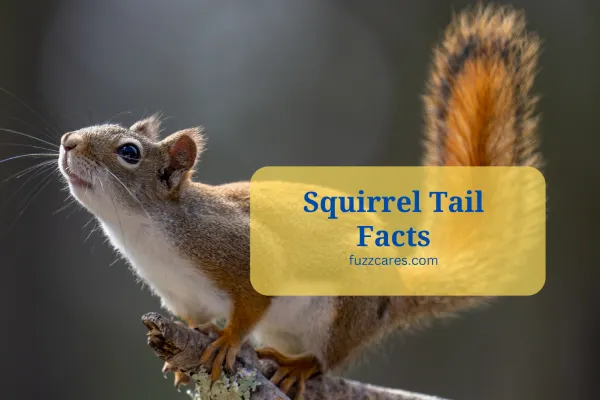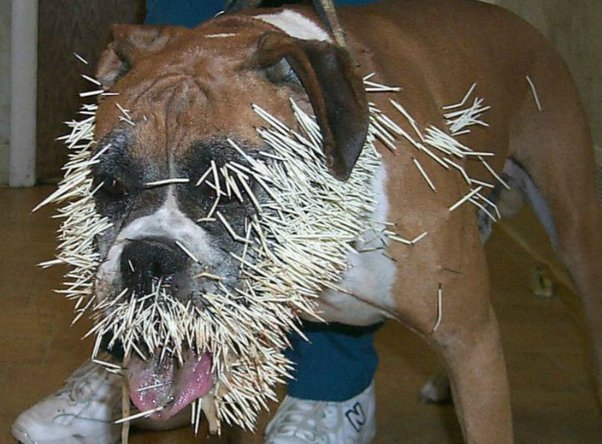Did you know that squirrel tails are more than just fluffy appendages?
These bushy tails serve several fascinating purposes for these agile creatures. From aiding in balance and communication to providing protection and even acting as a parachute, squirrel tails are truly remarkable.
In this article, we will delve into the captivating world of squirrel tail facts, exploring the various functions and adaptations that make these tails a crucial part of a squirrel’s life.
So, let’s embark on this journey of discovery and unravel the secrets behind these incredible squirrel tail facts.
A Brief Description of Squirrel Tail Facts
| Fact | Reasons |
|---|---|
| Length | Squirrel tails vary in length but are typically approximately one-third the length of their body. |
| Function | Squirrel tails have multifaceted functions, serving as a crucial tool for balance, communication, and navigation in trees. |
| Fluffy Appearance | The fluffy appearance of squirrel tails is due to the abundance of long, fine hairs that make up their fur. |
| Color Variation | Tail colors vary across squirrel species, spanning shades from brown and gray to red and black. |
| Balance Support | Squirrels rely on their tails for balance, particularly when making leaps between trees or traversing narrow branches. |
| Communication Tool | Tail movements serve as a form of communication among squirrels, conveying signals of danger or establishing dominance. |
| Thermoregulation Aid | Squirrel tails help regulate body temperature by dissipating heat in hot weather and providing insulation in cold weather. |
| Swimming Assistance | When swimming, squirrels use their tails as a rudder, enabling them to steer effectively in the water. |
| Tail Shedding | Squirrels shed and regrow their tails periodically, often in response to injuries or predation attempts. |
| Tool Usage | Certain squirrel species employ their tails as tools for carrying leaves, twigs, and materials to construct nests. |
| Unique Patterns | Each squirrel’s tail boasts a distinctive pattern, facilitating individual identification for researchers in the wild. |
| Partial Prehensility | Although not fully prehensile like a monkey’s tail, squirrels can use their tails to grasp objects to some extent. |
| Tassel-like Tips | Many squirrel tails feature tassel-like tips, enhancing their visual appeal. |
| Tail Variability | Squirrel tails vary in length and bushiness depending on the species, with some having shorter, slender tails. |
| Lifespan Feature | Squirrel tails can last a lifetime, continually growing throughout the squirrel’s life span. |
The fluffy and bushy tails of squirrels are not just adorable, but they also serve multiple purposes. From communication to balance and survival, a squirrel’s tail plays a vital role in its daily activities.
In this article, we will explore various fascinating squirrel tail facts, shedding light on how these unique appendages contribute to the lives of these agile creatures.
Related Post: Squirrel Tail Position Meaning
Structure and Appearance
Squirrel tails are specifically designed to catch the eye with their remarkable appearance. Here are some key features of squirrel tails:
The tail is covered in long, dense fur that gives it a fluffy appearance.
It consists of multiple individual hairs that are arranged in a neat manner, giving it a well-groomed look.
The color of the tail varies among squirrel species, ranging from shades of gray, brown, black, and even red.
Squirrel tails are typically longer than their bodies, measuring anywhere between 6 to 10 inches in length.
Communication and Social Significance
Squirrels use their tails as a means of communication, conveying various messages to their peers. Here’s how they accomplish this:
Tail flicking: Squirrels often flick their tails rapidly when they sense danger or want to alert others. This action serves as a visual signal, warning other squirrels of potential threats. It helps maintain the safety of their community.
Fluffing: When a squirrel fluffs its tail, it signifies dominance or assertiveness. This behavior is commonly observed during territorial disputes between neighboring squirrels.
Tail postures: By positioning their tails in different ways, squirrels express their moods and intentions. A raised tail indicates confidence, while a lowered tail suggests submission or fear.
Related Post: Do Squirrels Lose Their Tails
Balance and Agility
Squirrels are famous for their remarkable agility and acrobatic skills. Their tails play a crucial role in maintaining balance and aiding their agile movements:
Counterbalance: When squirrels jump or leap from tree to tree, their tails act as a counterbalance, ensuring their stability in mid-air. This counterbalance enables them to change direction swiftly without losing control.
Tightrope walking: Squirrels often navigate thin branches or power lines with ease. Their tails act as a natural tightrope walker’s pole, providing additional support and balance as they traverse these narrow paths.
Protection and Defense
Squirrel tails serve as a crucial defense mechanism against predators. Here’s how they aid in protection and defense:
Camouflage: When squirrels are at rest, they often wrap their tails around their bodies. This action helps them blend in with their surroundings, making it harder for predators to spot them.
Distraction technique: In a dangerous situation, a squirrel might engage in a behavior called “tail-flagging.” This involves rapidly twitching its tail to divert the predator’s attention towards the tail rather than the vulnerable body.
Tail shedding: In some cases, when a predator grasps a squirrel’s tail, the squirrel can detach the tail from its body, allowing it to escape. The tail will eventually grow back, although not always in its full original glory.
Thermoregulation
Squirrels are well-equipped to withstand different weather conditions, thanks in part to their tails, which play a role in thermoregulation:
Insulation: Squirrel tails provide additional insulation during colder months. Although their bodies are covered in thick fur, the long and bushy tail helps to retain heat and keep them warm in chilly climates.
Heat dissipation: During hot summer days, squirrels use their tails to dissipate excess heat. By holding their tails away from their bodies, they increase airflow and promote cooling.
Related Article: Can Squirrels Get Mange?
Swimming and Propulsion
Contrary to popular belief, squirrels can swim when necessary. Their tails are instrumental in aiding their swimming abilities:
Propulsion: Squirrels use their tails as rudders to navigate through water. The tail acts as a powerful propeller, providing the necessary thrust to move efficiently in lakes, rivers, or streams.
Buoyancy: The fluffy nature of their tails contributes to their ability to float. The increased surface area helps them stay afloat, allowing them to conserve energy while swimming.
Squirrel tails are not just cute accessories; they are extraordinary adaptations that enable squirrels to thrive in their natural habitats. Whether it’s for communication, balance, protection, or survival, these fluffy appendages serve a multitude of purposes.
The next time you spot a squirrel in action, take a moment to appreciate the unique qualities and remarkable capabilities of its magnificent tail.
Related Post: Does It Hurt When a Squirrel Loses Its Tail
Frequently Asked Questions
What is the purpose of a squirrel’s tail?
The purpose of a squirrel’s tail is primarily for balance and communication. It helps squirrels maintain stability while navigating through trees and performing acrobatic movements.
The tail serves as a means of communication, as squirrels use different tail movements to signal alarm, aggression, or attraction.
How long can a squirrel’s tail grow?
The length of a squirrel’s tail varies depending on the species. On average, squirrel tails can range from 5 to 10 inches long.
The proportion of the tail to its body is essential for maintaining balance, especially when leaping from tree to tree.
What is the tail made of?
A squirrel’s tail is composed of long, thin, and flexible hairs called guard hairs. These hairs are supported by a network of blood vessels and muscles that allow the tail to move and be positioned according to the squirrel’s needs.
The tail’s dense fur also provides insulation during colder months.
Can squirrels control their tails?
Yes, squirrels have a remarkable ability to control their tails with precision. They can move their tails in various directions, including upward, downward, and side to side.
This flexibility enables them to maintain balance while making quick turns or navigating challenging terrain.
Why do squirrels flick their tails?
Squirrels often flick or twitch their tails as a form of communication. When they feel threatened or encounter a potential predator, they may rapidly flick their tails to signal danger to other squirrels nearby.
This behavior serves as an alarm, warning others to be cautious and stay vigilant.
Do squirrels lose their tails?
Squirrels do not typically lose their tails unless they are involved in a severe accident or are attacked by a predator.
Unlike some animals that can detach or shed their tails as a defense mechanism, a squirrel’s tail is firmly attached to its body and is not designed for easy detachment.
Final Thoughts
Squirrel tails are fascinating appendages that serve multiple purposes. Aside from providing balance and agility, squirrel tails also play a crucial role in communication, acting as a visual signal to other squirrels.
These furry tails are not only long and bushy, but they also possess the ability to swivel and twitch in various directions.
A squirrel’s tail can even act as a parachute-like tool, helping them to glide effortlessly through the air. By understanding squirrel tail facts, we gain insight into the remarkable adaptability and resourcefulness of these charming creatures.

🐾 I’m Marquis, an animal enthusiast 🦁🐯 with a passion for both wild and home animal care. In the wild, I’ve studied majestic species like 🦍🐅, collaborating with conservationists. At home, I’m all about fostering loving environments for pets 🐶🐱🐦, with hands-on experience and shelter volunteering.




Leave a Reply